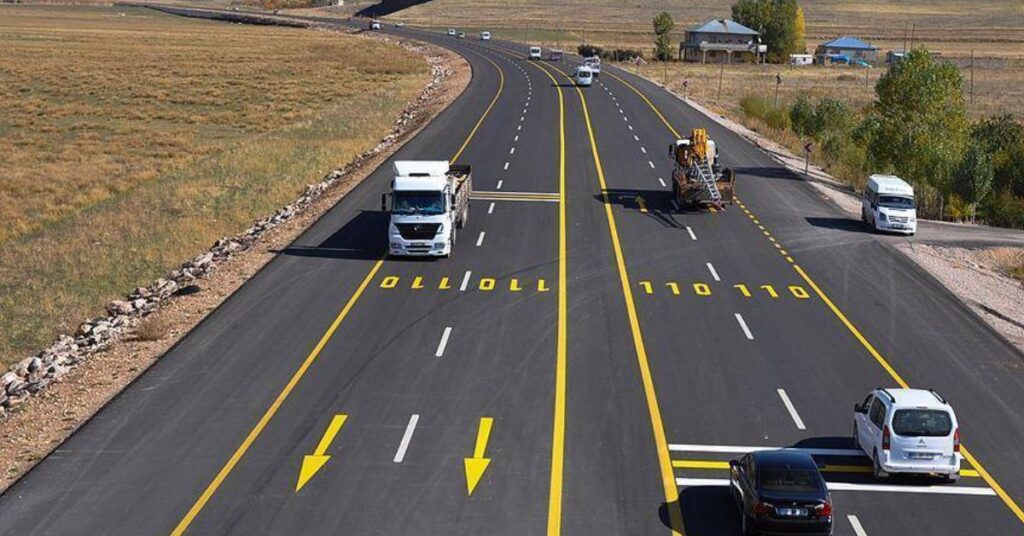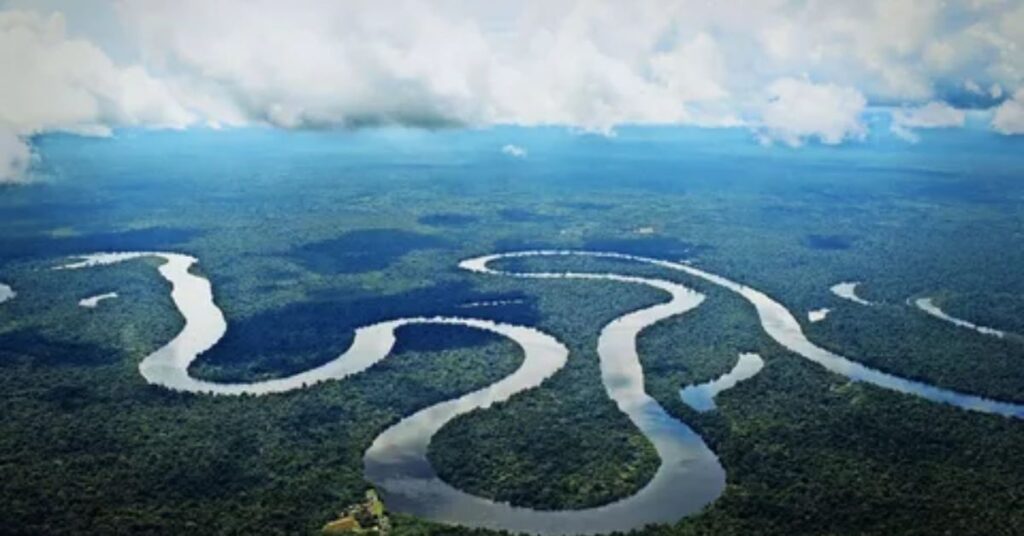In our daily lives, we often encounter distances measured in kilometers, but it can be challenging to grasp just how far a specific distance truly is.
This article aims to put 500 kilometers into perspective by comparing it to familiar landmarks, routes, and everyday experiences. By the end, you’ll have a clearer understanding of what 500 km represents in various contexts.
How Long is 500 Kilometers to Drive?

When it comes to driving, 500 kilometers is a significant distance that requires careful planning and consideration. The time it takes to cover this distance can vary greatly depending on several factors, including the type of road, traffic conditions, speed limits, and the number of stops made along the way.
On average, if you’re driving on a highway with minimal traffic and maintaining a steady speed of about 100 km/h (62 mph), it would take approximately 5 hours to cover 500 kilometers. However, this is an ideal scenario that doesn’t account for real-world conditions.
In practice, a 500-kilometer drive often takes longer due to various factors:
- Rest stops: On a journey of this length, it’s recommended to take breaks every couple of hours for safety and comfort. These stops can add an hour or more to your total travel time.
- Traffic: Depending on your route, you may encounter heavy traffic, especially when passing through or near urban areas. This can significantly increase your travel time.
- Road conditions: If your route includes winding roads, construction zones, or areas with lower speed limits, your average speed will decrease, extending the duration of your trip.
- Weather: Adverse weather conditions such as rain, snow, or fog can slow down your progress and require more cautious driving.
- Vehicle type: The type of vehicle you’re driving can also impact your travel time. A car will generally cover the distance faster than a large truck or RV.
How Far is 500 km to Walk?

Walking 500 kilometers is a formidable challenge that requires significant time, preparation, and physical endurance. To put this distance into perspective, it’s comparable to walking from London to Edinburgh or from New York City to Toronto.
The time it takes to walk 500 km depends on various factors, including:
- Walking speed: An average person walks at about 5 km/h (3.1 mph) on flat terrain.
- Terrain: Hilly or mountainous areas will slow down the pace considerably.
- Physical fitness: A person’s stamina and overall fitness level play a crucial role in maintaining a consistent pace over long distances.
- Rest periods: Walking for extended periods requires regular breaks and rest days.
Assuming an average walking speed of 5 km/h and walking for 8 hours a day, it would take approximately 12.5 days to cover 500 km. However, this estimate doesn’t account for rest days or variations in terrain.
READ THIS BLOG: Common Things That Are 8 Inches Long
1. 1/14 the Length of the Amazon River

The Amazon River, the world’s largest river by water volume, stretches an impressive 6,992 kilometers (4,345 miles) from its source in the Andes Mountains to its mouth at the Atlantic Ocean. To put 500 kilometers into perspective, it represents just 1/14 of the Amazon’s total length.
This comparison helps illustrate the sheer magnitude of the Amazon River. If you were to travel 500 kilometers along the Amazon, you would have only experienced a small fraction of its entire course. This journey would take you through diverse ecosystems, from dense rainforests to wide, open sections where the river can be several kilometers wide.
The Amazon’s vast length allows it to drain a massive basin covering about 40% of South America, playing a crucial role in the continent’s hydrology and ecology. Every 500-kilometer segment of the river showcases unique characteristics, from its narrow, fast-flowing upper reaches to its broad, sediment-rich lower course.
2. 100 Laps Around Hyde Park

Hyde Park, one of London’s largest and most famous parks, covers an area of 350 acres (142 hectares). The perimeter of Hyde Park is approximately 5 kilometers (3.1 miles). This means that walking or running 500 kilometers is equivalent to circling Hyde Park 100 times.
Imagine setting out to walk around Hyde Park every day for over three months. Each day, you would complete one full circuit of the park, taking in its diverse landscapes, from the Serpentine lake to the various monuments and gardens. After 100 days, you would have covered a distance of 500 kilometers.
This comparison helps to break down the vast distance of 500 km into more manageable, relatable chunks. It also highlights how seemingly small distances, when repeated many times, can add up to impressive totals. For Londoners or visitors to the city, this comparison provides a tangible way to conceptualize 500 kilometers within a familiar urban setting.
3. 1/9 the Length of I-80

Interstate 80 (I-80) is one of the longest highways in the United States, stretching 4,666 kilometers (2,899 miles) from San Francisco, California, to Teaneck, New Jersey. It passes through 11 states and serves as a major east-west transportation artery across the country.
500 kilometers represents approximately 1/9 of the total length of I-80. To visualize this, imagine setting out on a road trip from San Francisco and driving eastward for 500 kilometers. This would take you roughly to the Nevada-Utah border, just a fraction of the entire journey across the continent.
This comparison underscores the vast distances involved in cross-country travel in the United States. It also highlights how 500 kilometers, while a significant distance in its own right, is still just a portion of the journeys undertaken by long-haul truckers and cross-country travelers on a regular basis.
4. 74 Trips Around the Las Vegas Strip

The Las Vegas Strip, famous for its concentration of resort hotels and casinos, is approximately 6.8 kilometers (4.2 miles) long. To cover 500 kilometers, you would need to walk the entire length of the Strip 74 times.
Imagine spending over two months exploring every inch of the Las Vegas Strip, passing by iconic hotels and casinos, dazzling light displays, and world-class entertainment venues. Each trip would take you from the Mandalay Bay at the southern end to the Stratosphere Tower at the northern end.
This comparison brings the abstract distance of 500 kilometers into the context of one of the world’s most famous streets. It helps to illustrate how a relatively short stretch of road, when traversed multiple times, can add up to a substantial distance.
5. 1/6 the Length of the Danube River

The Danube River, Europe’s second-longest river after the Volga, flows for 2,850 kilometers (1,770 miles) from its source in Germany’s Black Forest to the Black Sea. It passes through or forms a border with 10 countries, making it one of the most international rivers in the world.
500 kilometers represents about 1/6 of the Danube’s total length. To put this into perspective, if you were to travel 500 kilometers along the Danube, you would cover roughly the distance from its source in Germany to Budapest, the capital of Hungary.
This section of the river takes you through four countries – Germany, Austria, Slovakia, and Hungary – and past numerous historic cities and landmarks. You would witness the river’s transformation from a relatively narrow stream in the Black Forest to a major waterway by the time it reaches Budapest.
6. 12 Times the Marathon

A marathon, one of the most challenging and prestigious long-distance running events, covers a distance of 42.195 kilometers (26.2 miles). This distance was standardized in the early 20th century and is based on the legendary run of Pheidippides from Marathon to Athens.
To reach 500 kilometers, you would need to run the marathon distance nearly 12 times (11.85 to be precise). This comparison puts into perspective the immense physical challenge that 500 kilometers represents.
For runners, this comparison is particularly meaningful. Many consider completing a single marathon to be a significant life achievement, requiring months of training and preparation. The idea of running this distance 12 times in succession is almost unfathomable for most people.
7. 156 Round Trips Along the National Mall

The National Mall in Washington, D.C., stretching from the Lincoln Memorial to the U.S. Capitol Building, is approximately 3.2 kilometers (2 miles) long. To cover 500 kilometers, you would need to walk the length of the National Mall 156 times.
Imagine spending several weeks exploring this iconic area of the United States capital, passing by world-famous monuments and museums on each trip. You would walk past the Washington Monument, the World War II Memorial, and numerous Smithsonian museums over 150 times.
This comparison brings the abstract distance of 500 kilometers into a familiar context for many Americans and international visitors. It helps to illustrate how a relatively short distance, when repeated many times, can add up to a substantial total.
READ ALSO: How Big Is 10 Inches Compared to An Object?
8. Flight Distance

In terms of air travel, 500 kilometers is a short to medium-haul flight distance. It’s roughly equivalent to flying from:
- London to Paris (344 km)
- New York City to Toronto (551 km)
- Tokyo to Osaka (514 km)
- Sydney to Melbourne (714 km)
These flights typically take between 1 to 2 hours, depending on the specific route, aircraft type, and wind conditions. This comparison helps to illustrate how modern transportation has shrunk distances that would have taken days or weeks to cover in the past.
However, it’s important to note that the actual flight path is often longer than the straight-line distance due to air traffic control routes and weather conditions. Additionally, the total travel time is significantly longer when considering the time needed for check-in, security procedures, boarding, and baggage claim.
This perspective on 500 kilometers highlights how our perception of distance has changed with the advent of air travel. A journey that might take days by car or weeks on foot can be completed in a matter of hours by plane.
FAQ’s
How many miles is 500 kilometers?
500 kilometers is equivalent to approximately 310.7 miles.
How long would it take to bike 500 kilometers?
Assuming an average speed of 20 km/h and cycling for 8 hours a day, it would take about 3-4 days to bike 500 kilometers.
Can you drive 500 kilometers in a day?
Yes, it’s possible to drive 500 kilometers in a day, typically taking 5-8 hours depending on road conditions and stops.
How many steps would it take to walk 500 kilometers?
Assuming an average stride length of 0.7 meters, it would take about 714,286 steps to walk 500 kilometers.
Is 500 kilometers considered a long distance?
Yes, 500 kilometers is generally considered a long distance for travel by car or on foot, but it’s a relatively short distance for air travel.
Conclusion
Understanding the scale of 500 kilometers can be challenging without proper context. By comparing this distance to various familiar landmarks, routes, and experiences, we can better grasp its magnitude. From representing a fraction of the world’s longest rivers to equating to multiple marathons or hundreds of laps around famous parks, 500 kilometers proves to be a substantial distance in many contexts.
This exploration of 500 kilometers highlights the vast differences in how we perceive and experience distance depending on our mode of travel. What might be a brief plane journey could be a multi-week walking adventure or a full day’s drive. It also underscores the incredible diversity of landscapes and experiences one can encounter over such a distance, whether traversing a single country or crossing international borders.

Anthony is a seasoned SEO expert with a passion for content writing, keyword research, and web development. He combines technical expertise with creative strategies to deliver exceptional digital solutions.












